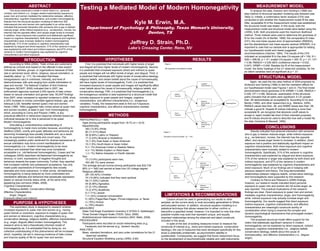This study tested a model of modern homonegativity by examining the relationships between affective characteristics (anger and disgust), cognitive characteristics (religious beliefs and conservative ideology), exposure to queer individuals, and levels of modern homonegativity. The researchers hypothesized that anger, disgust and cognitive characteristics would be associated with higher modern homonegativity, while direct (but not indirect) exposure would be associated with lower homonegativity by impacting cognitive characteristics. Structural equation modeling supported the hypotheses and revealed that direct exposure reduced cognitive characteristics and modern homonegativity, while indirect exposure increased anger.
